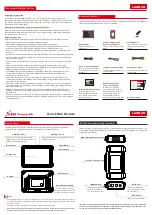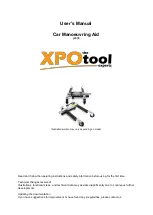
12
Lib
er
at
ors
Theory of Operation
VI
To minimize the effect of undersaturated liquid in the Liberator, a
fixed orifice has been installed in the outlet of the vent valve. This
orifice regulates the back pressure in the unit during the fill pro-
cess, resulting in improved saturation pressures in the Liberator.
Operation
When the flow control valve is at any setting other than off, and
the economizer valve is open (presure over 1,4 bar (20 psig), see
Figure 4), gaseous oxygen is forced from the head space in the
inner vessel, through the economizer valve, to the breathing coil.
This process conserves or “economizes” liquid oxygen by with-
drawing the head gas first, instead of allowing it to escape through
the relief valve.
While flowing through the breathing coil, the cold gaseous oxy-
gen is warmed to near-ambient temperature before being me-
tered and dispensed by the flow control valve.
Whenever gas is removed from the space above the liquid oxy-
gen (head space), the inner vessel internal pressure begins to
drop slightly. When the pressure drops to 1,4 bar (20 psig), the
economizer valve closes,(see Figure 5) forcing liquid oxygen up
the withdrawal tube and through the warming coil where it be-
comes gas.
The gas then flows through the bypass tee to the breathing coil,
the flow control valve, and then the patient.
As the pressure in the container increases over 1,4 bar (20 psig),
the economizer valve opens, and the cycle repeats, maintaining
constant oxygen flow, at the selected flow rate, to the patient.
Economizer
(Open)
Breathing
Coils
Gas to Patient
Gas
Economizer
(Closed)
Warming
Coils
Gas to Patient
Breathing
Coils
If the flow control valve and vent valve are closed with LOX in the
unit, then the pressure in the inner vessel will remain near the pri-
mary relief valve setting of 1,5-1,7 bar/21.8-24.2 psig.
In the Liberator, as in all vacuum-insulated cryogenic
contain-ers, some liquid (oxygen in this case) is always
evaporating into a gas. The rate of generation of this gas, with
the flow control valve closed, is called the normal evaporation
rate (NER). This gas is lost through the primary relief valve.
FIGURE 4:
Operation
between 1,4 Bar (20 PSI) and 1,7 Bar (24.2 PSI)
FIGURE 5:
Operation
between 1,2 Bar (18PSI) and 1,4 Bar (20 PSI)
WARNING:
Low oxygen flow rates to the patient may result if the
Liberator is filled with under-saturated liquid oxygen.
WARNING:
The vent valve orifice does not guarantee properly
saturated LOX. The filling source must be correctly saturated or
low/high saturation will occur in CAIRE reservoirs.
*Note: The operation
detailed in both
Figures 4 and 5 are
considered normal
operation.
Liberators Technical Service Manual • PN 13350704 Rev
K














































